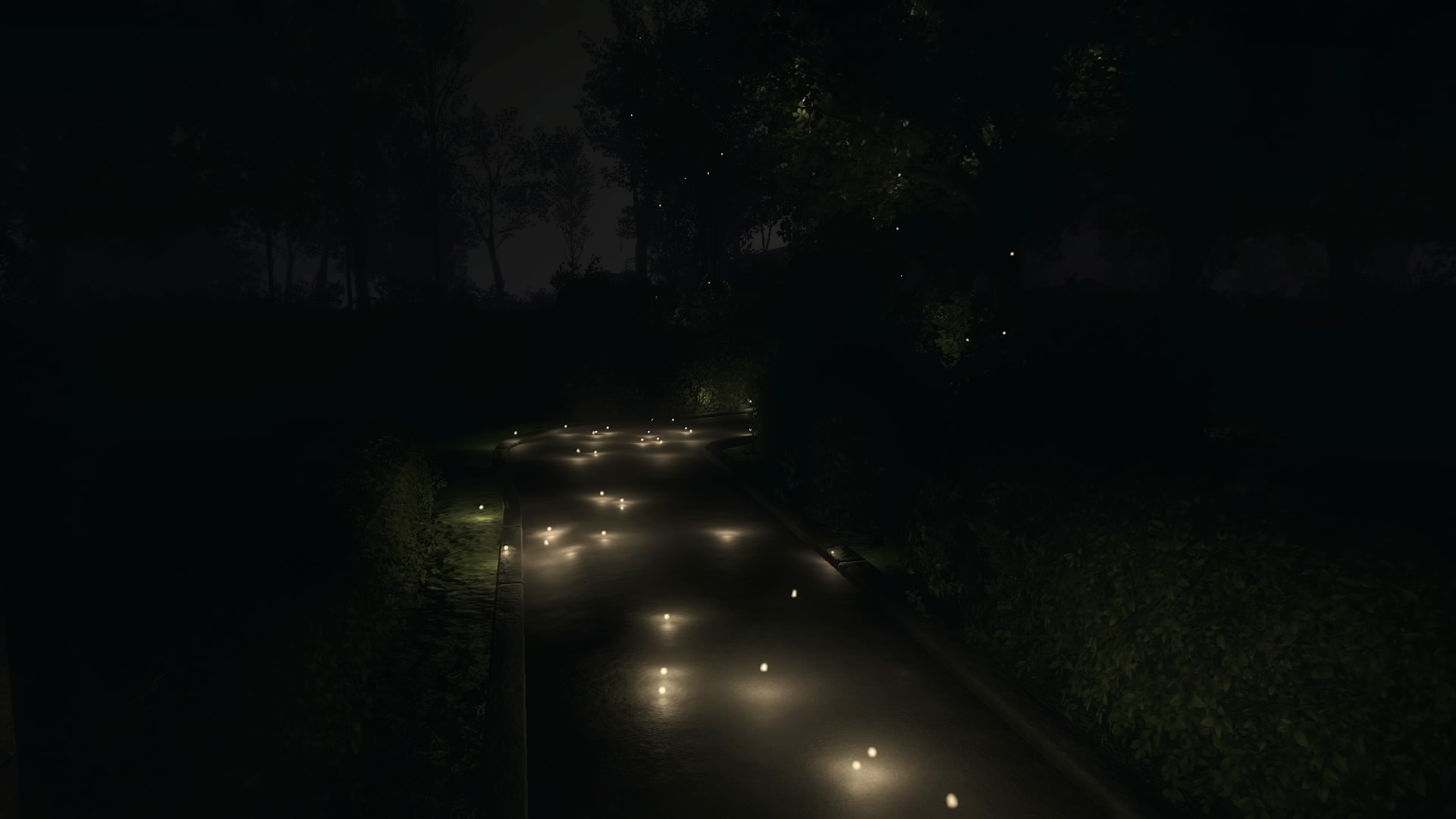

Just up the road from the headquarters of Retro Gaming Power is the county of Shropshire. It’s a beautiful part of England. Very rural. Lots of grass. Sheep graze happily in their fields of green, cows moo merrily in their meadows of, erm, mud, And tractors clog up every single road. All the pissing time. But there’s more to Shropshire than just fields, cattle and annoying farmers with built in proximity sensors and a strange desire to delay you on your journey. There are also some built up areas. There’s Shrewsbury, the county town, for example. And Ludlow, with its castle. And there’s also Telford. Telford even has an ice-skating rink and it’s where many Shropshire folk go to in their free time. Not the people of Yaughton though. They all went to the Rapture instead. And as anybody knows, there is no ice-skating rink at the Rapture.
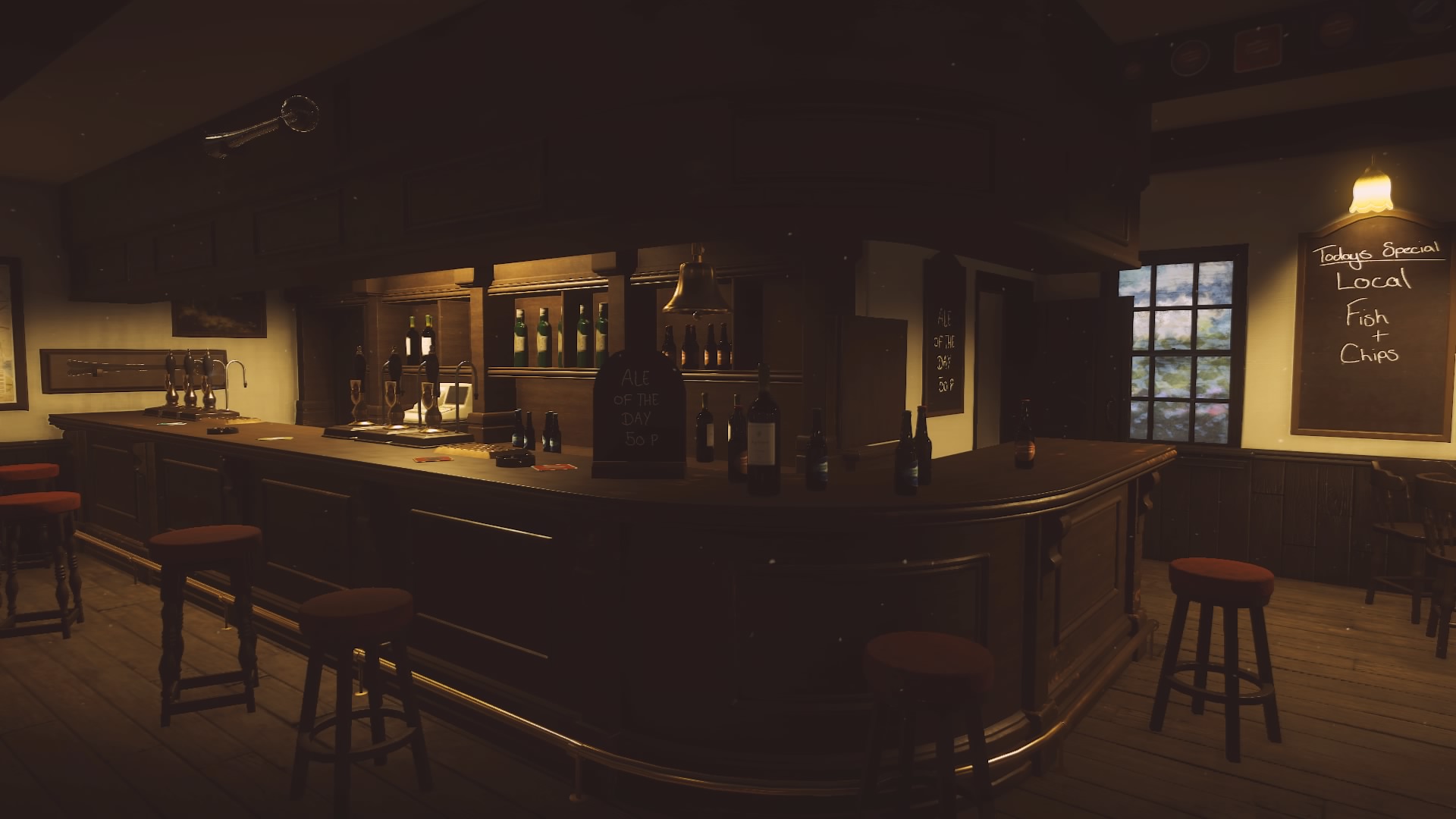

Yaughton isn’t a place you’d find on a map of Shropshire. That’s because it’s make-believe, made up by the authors of the game Everybody’s Gone to the Rapture just to see how many people try to locate it on Google Maps to find out where it is. People like me. Yep, that was a fruitless hour I’ll never get back. But, even so, it’s very representative of a typical Shropshire village. In Everybody’s Gone to the Rapture, you get the opportunity to go for a meander around the fictional village of Yaughton to work out for yourself exactly how and why its residents fell victim to the rapturous Rapture. It’s never explained who, or even what, you are, or why you feel the need to make sense of the recent events in Yaughton. Maybe you’re just a nosey parker from a neighbouring village wondering what all the bright lights in Yaughton were all about. Maybe you’re a ghost? Maybe you’re even the Rapture itself? Or Theresa May still trying to find her way out of the EU? Who knows?

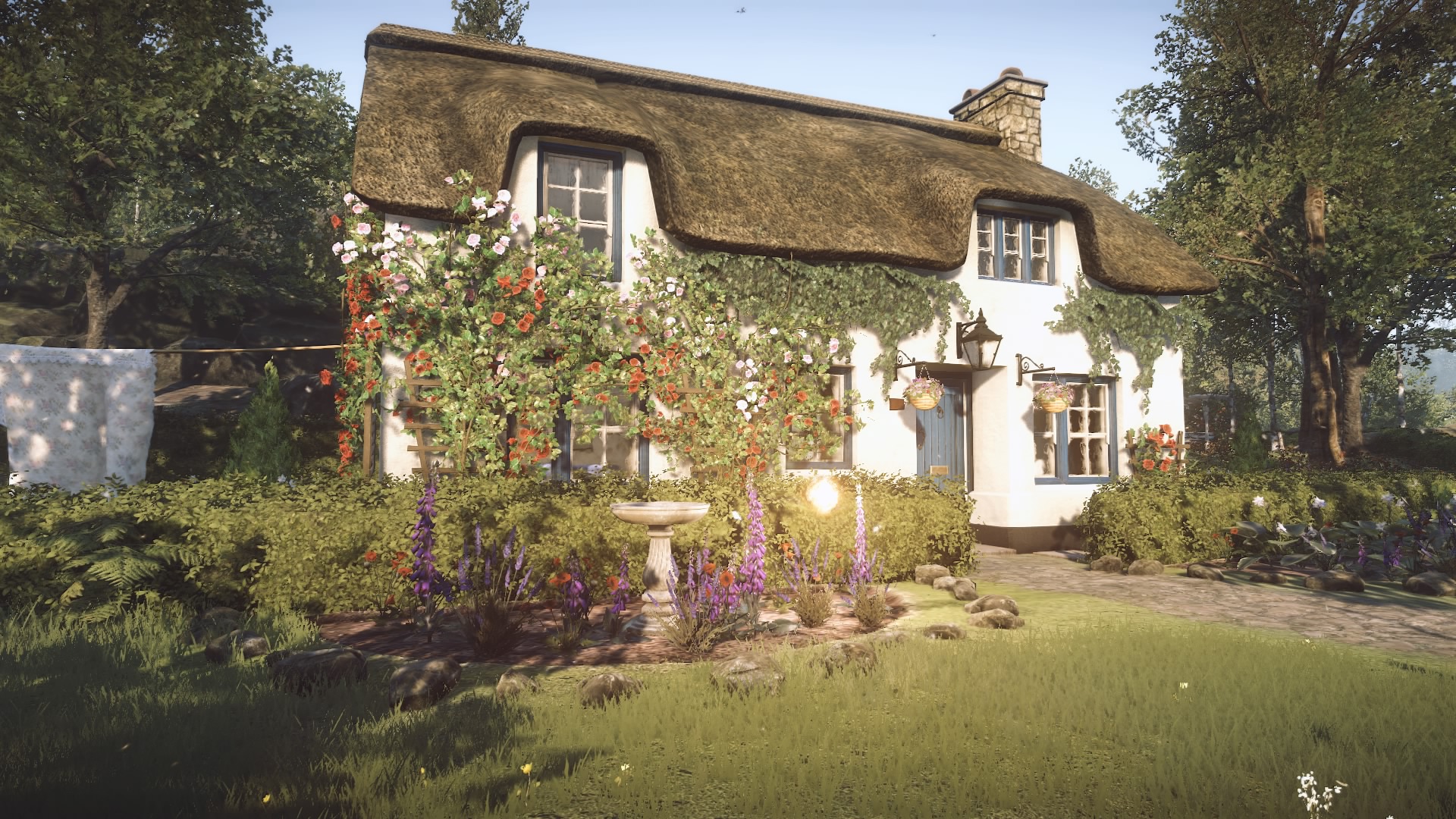
We’ll begin by trying to make a bit of sense of what we know at the start of the game, while also trying to avoid giving away any spoilers for those who may decide to experience it for themselves. As the title reveals, and as I’ve also already revealed, everybody in Yaughton has gone somewhere. To the Rapture apparently, with the Rapture being some sort of apocalyptic end of existence thing. The game takes place in 1984. And, erm, yes, that’s pretty much all we know.

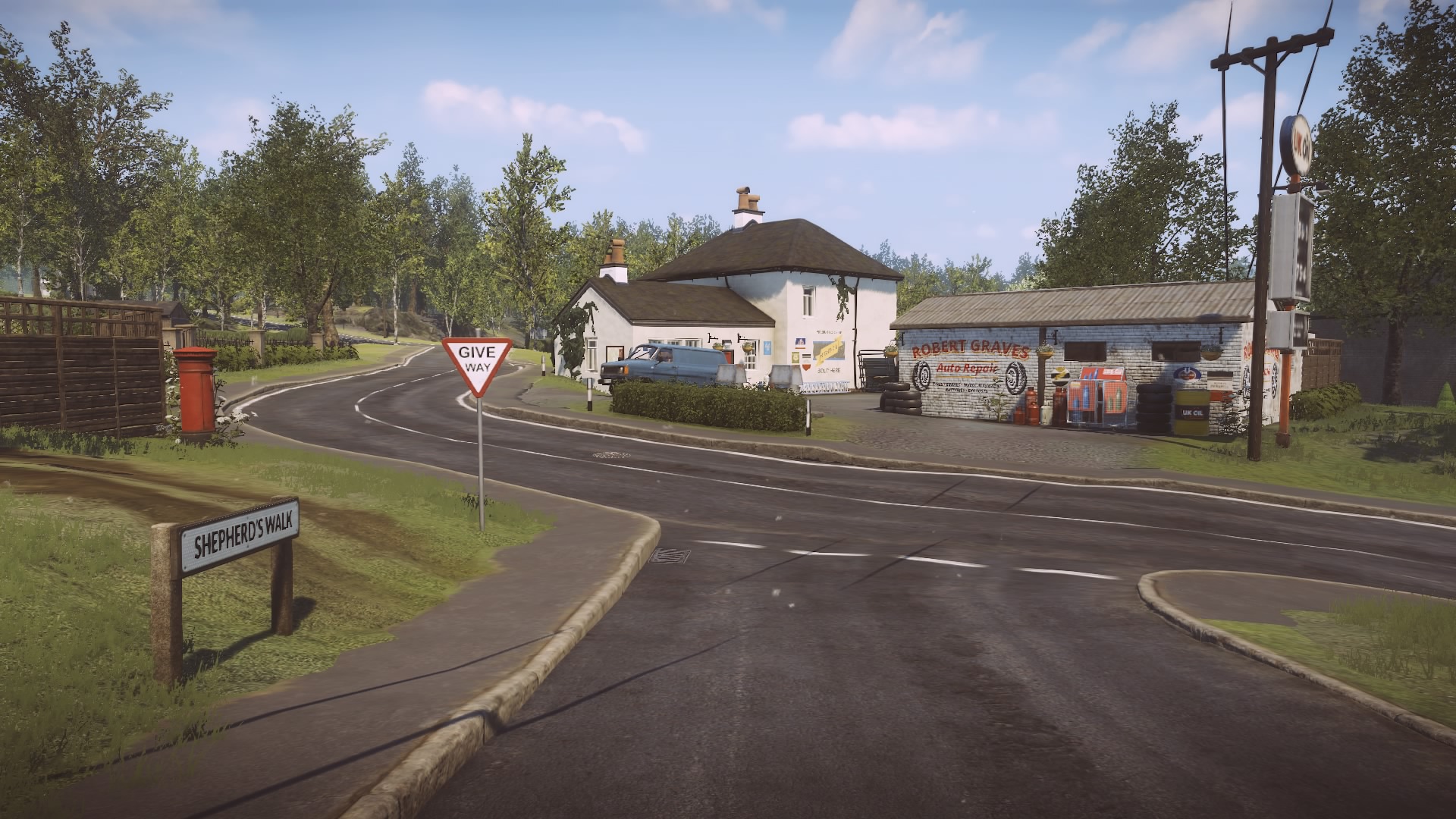
With its residents raptured away, you are free to roam wherever you like in the deserted wilderness of Yaughton. You could visit the pub, the doctors, the church, and the many homes of its departed inhabitants. But, don’t forget, you’re not just there to take advantage of this freedom to do how you please, wherever you please. You’re there to make sense of what happened because, erm, I dunno. Because the game wants you to. Helping you out is a light which seems eager to direct you to places of interest. You see, although Yaughton’s peoplefolk have vanished, the Rapture appears to have left behind remnants of what they were up to in the weeks, days, hours and minutes leading up to their fateful fate. These remnants are in the form of apparitions which show a selection of events and conversations that appear to have been “recorded” in various locations around the village. Whenever you reach these locations, you begin to see luminous outlines of the characters, and hear snippets of their chatter. And it’s these conversations that enable you to acquire knowledge of the events surrounding the disappearances. And while you’re traipsing through the village, you can also jump into telephone boxes to listen to old phone calls, or press play on a number of cassette players that are scattered around, or take a gander at leaflets, signs and posters. They all provide context and clues to the circumstances of the recent occurrings. Oh, so occurrings isn’t a word, is it? Well, it is now.


That really is all the game is about. You wander about, following the guiding light if you wish or just making your own way around. You’ll discover more and more about the residents themselves, their lives, their relationships and their reactions to the strange events taking place. You’ll also learn a bit about what may have caused them to vanish into nothingness. As far as interactive gameplay goes, it’s actually very limited. It’s a first person game, with your actions being restricted to walking around with the directional stick, pressing buttons to switch things on and off, like lights, radios and TV sets, or twisting your controller around to tune-in to see certain conversations happen before your eyes.

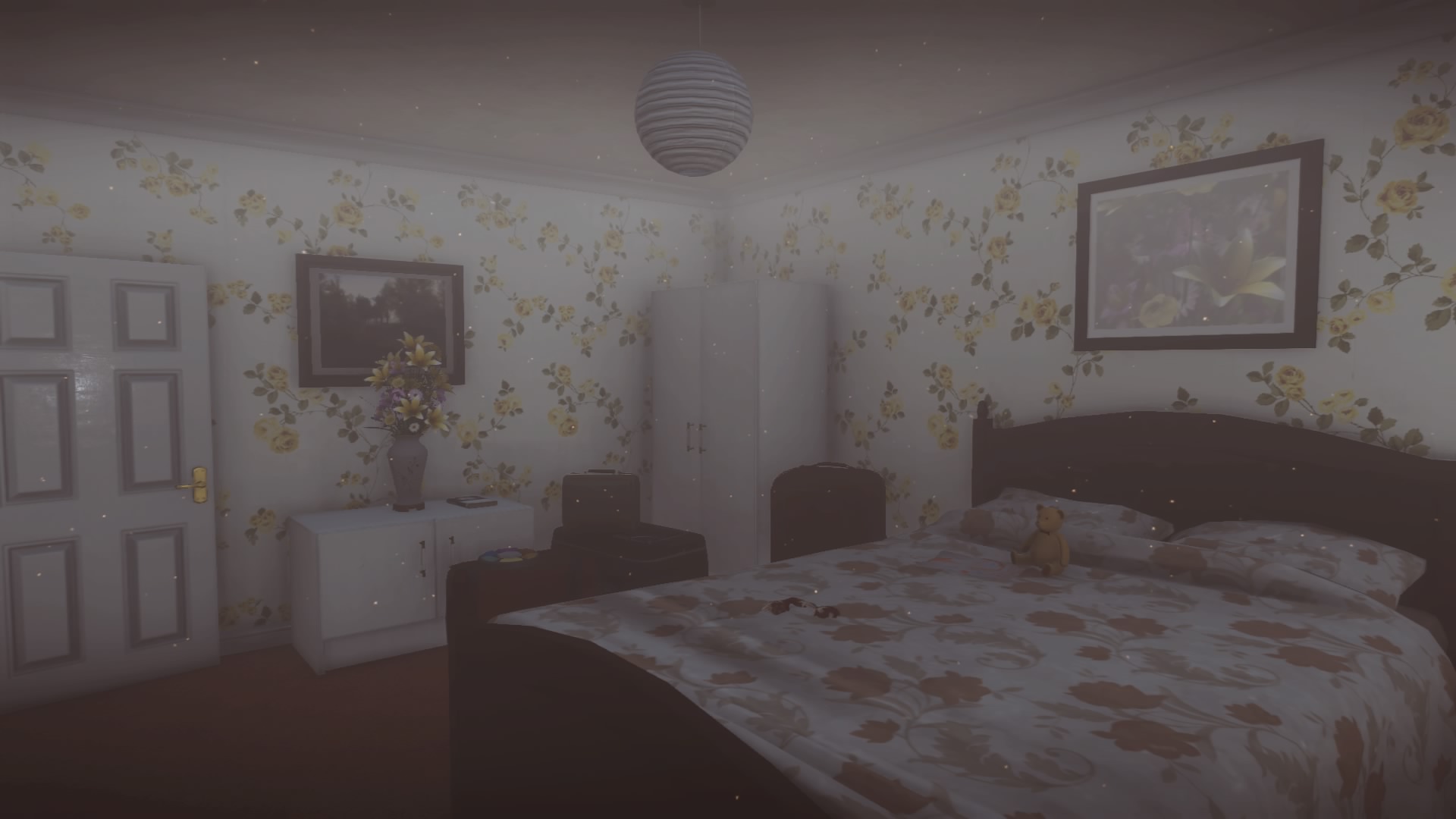
Despite being limited in gameplay elements, Everybody’s Gone to the Rapture, or EGTTR for fans of turning words into bunches of letters, attempts to absorb and interest you in other ways. It definitely isn’t going to be for everyone though. Firstly, graphics and sound play a huge part in grabbing and holding your attention. Yaughton is depicted beautifully, and gives you an impression that you’re exploring a living painting. The graphics make it feel like a real village, full of real-life locations. Although certain assets are reused throughout the game, buildings that you enter all have their individual touches to reflect their recent occupants’ own characteristics. And although it’s vacant of people, it still somehow feels vibrant and alive. As is apparent early on, the Rapture that captured Yaughton’s villagers happened only shortly before you began your exploration of it. Cigarette ends still burn in ash trays, gardens have recently been tended to and lawns are freshly mown. Unlike other post-apocalyptic worlds, Yaughton isn’t rusting and overgrown. And in a weird way, this makes it feel more discomforting, kind of like you’re intruding in a place that belongs to other people. When exploring people’s homes, it does feel a bit like its owners have just nipped out – maybe they’re ice skating in Telford – and they’ll be back any second now, so you really shouldn’t be snooping around their property. The reality that they’re not coming back is therefore more unsettling.


While graphics help to set the scene and give the game its unique look, the use of sound is perhaps more important. The story is told through the conversations you hear. In addition to the villagers talking about the unusual events that appear to be occurring and the effects that these seem to be having on them, you’ll witness them discussing the kind of daily dramas that give their little lives a purpose, from the mundane to the interesting. Of course, even seemingly pointless gossip exists to paint a picture of what life in Yaughton is like, as well as giving an insight into each character’s personality and their thoughts and opinions on a surprisingly varied range of topics. Recordings left on cassette tapes in radios are another source of information. These recordings serve as forms of personal journals left by certain individuals. Suppose it’s somewhat contrived that each tape happens to be in exactly the correct place to continue the plot as soon as you press play on the radios in which they’re found.


Conversations and recordings are acted out very much in the style of a cosy radio play and are all very professionally done. They do make things feel quaint, which is juxtaposed against the science-fiction plotline. It’s very much The Archers meets The X-Files. Although it is difficult to make out who’s who as the graphics deliberately depict the characters as being apparitions rather than actually being there, each person can be distinguished by distinctive voices. One way of doing this is to give characters different regional accents. This might be stretching realism a little given that a typical Shropshire village will mostly be populated by locals with a kind of nothingy accent, but it prevents you from struggling to assign voices to people. Even so, it does still take a bit of time to get to know who everybody is.
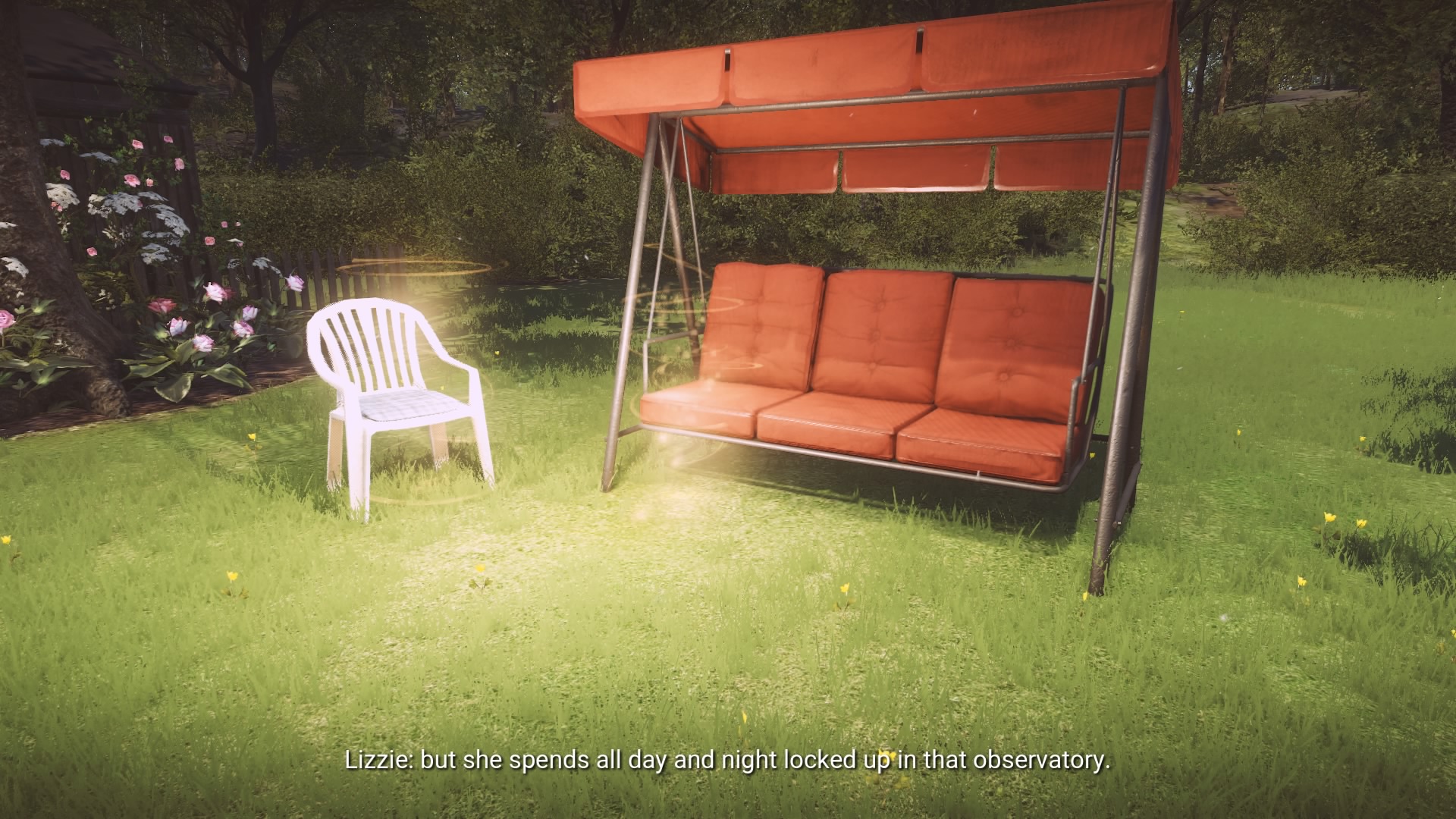
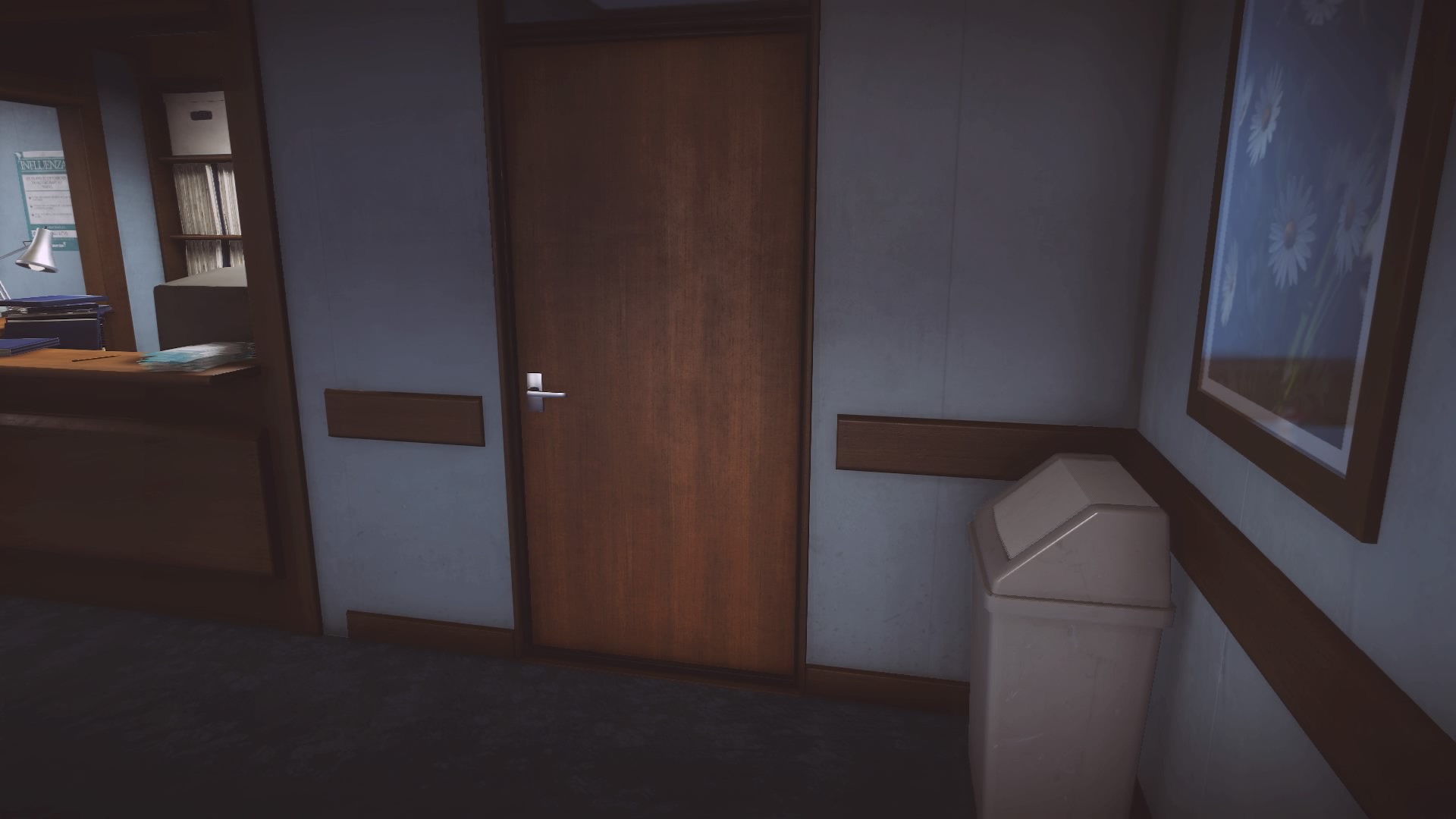
Accompanying the voices that emanate from characters’ mouths are sound effects and music. Not out of their mouths, mind. Perhaps I’ll reword that first sentence. It’s hard to talk about the game’s audio effects without potentially spoiling things somewhat, but they really are wonderful. Also very impressive is the music. The game is split into sections. You explore part of the village for a while and when you’ve done with it, you go onto another part and onto a new chapter. Music plays a clever role in helping with the transition as you make your way to the next area. The game's stunning and haunting soundtrack is made up of choral and orchestral compositions. Like the game itself though, it might not be everyone's cup of tea, but it really does suit the context of it. Again, explaining why may potentially spoil the experience for those wanting to play the game, so I’ll say no more.
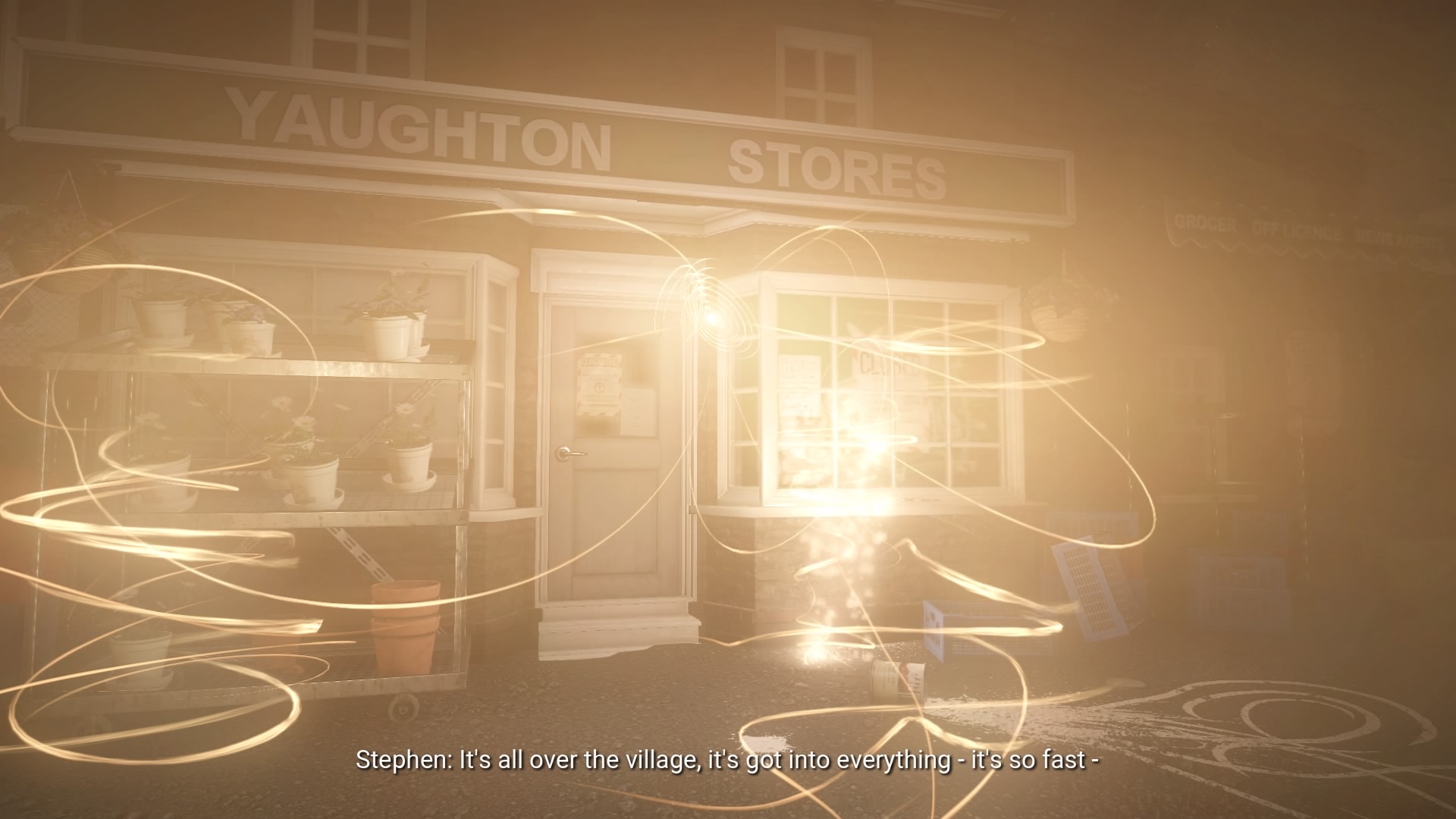
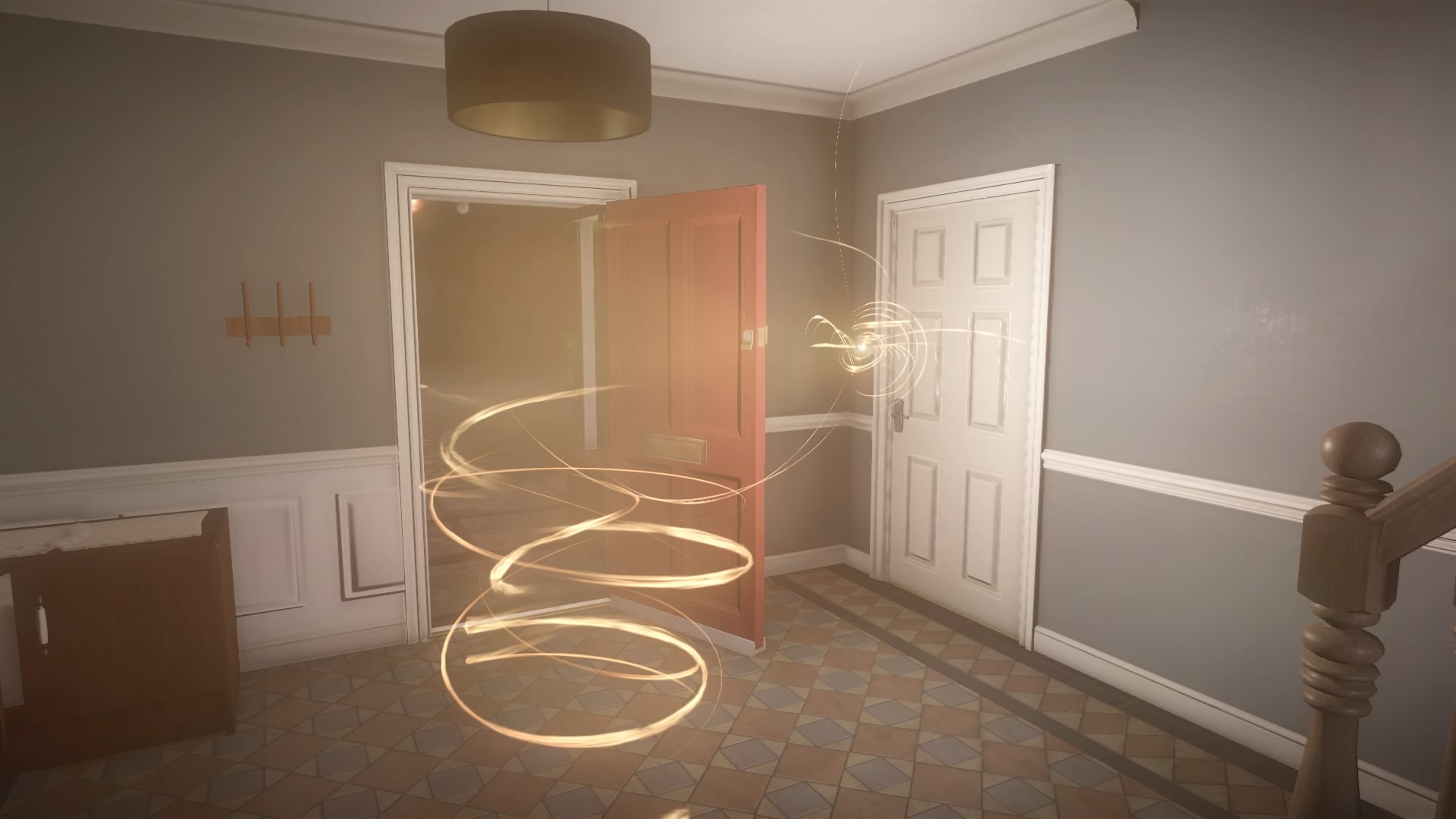
Now, while your adventure around Yaughton may look and sound great, it does have some issues. At first, as you arrive in the village and take in its wonderous sights and sounds, you want to explore everything. You want to leave no stone unturned in your unravelling of the mystery. So, you’ll enter every building that you can, listen to every conversation, and view every poster and sign. There’s no pressure on you to get on with things, you can go at your own pace. Initially it feels quite relaxing, despite the slightly unsettling nature of the game’s plot, and exploring the village and getting to know its former residents is fascinating. Up to a point though as, after a while, you begin yearning for some variety and kind of want things to hurry up a little bit.
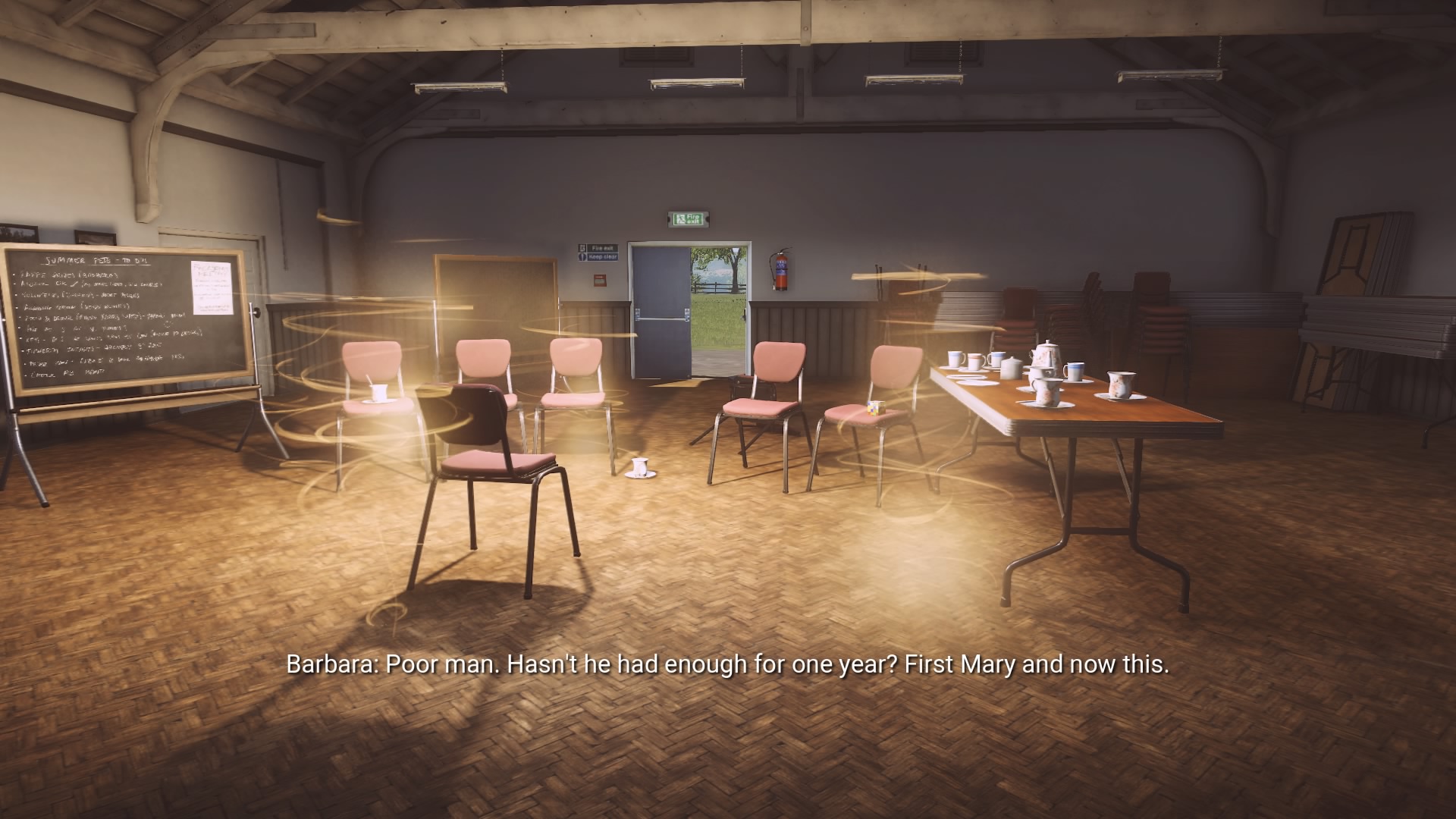
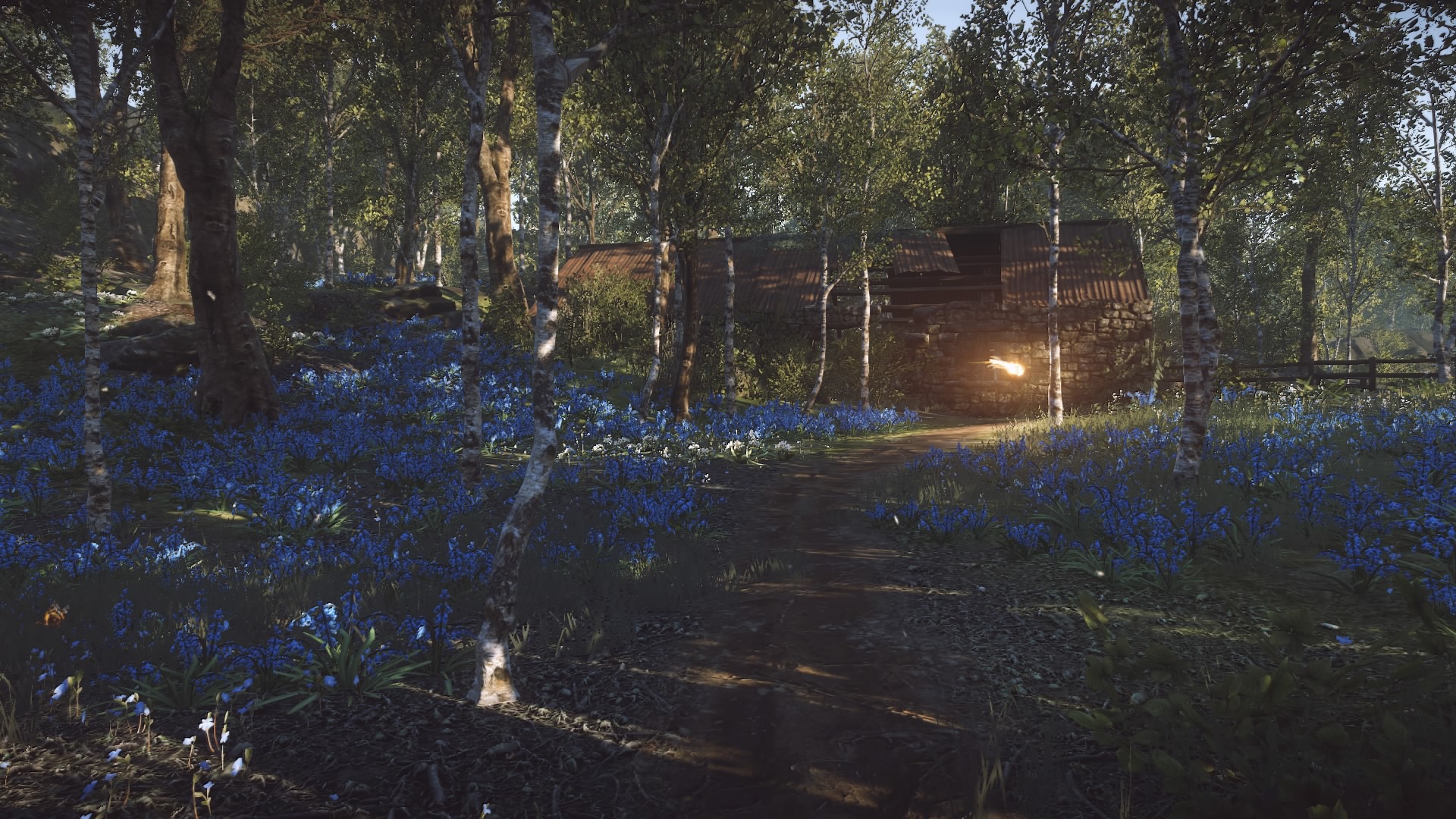
One major problem with the game is that your speed of movement is just too slow. Initially, this isn’t too much of an issue as buildings are quite close together and interactions are fairly frequent in the various locations you pass. Plus, as you’re getting to grips with things, you probably don’t notice it. But as you get further in, it seems that the space you have to travel to get from one place to another gets greater and conversations are spread out more, so getting to them becomes a chore. There is a way of speeding up, by holding down R2 while walking, but this only kicks in after seven seconds and barely makes a difference. Apparently, this was a post-release addition to the game in response to complaints, and there is no clue in the game itself that you can do this. The only reason I can think of for movement being so slow is to force you to take your time and to ensure that you don’t complete it too quickly, but rather than encouraging you to experience the game as a relaxed walkabout, it just frustrates you. Even more so when you find you have to backtrack to something you may have missed. You can literally spend ten minutes just walking from one location to another. And as lovely as Yaughton is, your pondering pace is more of a yawn than a yarn.
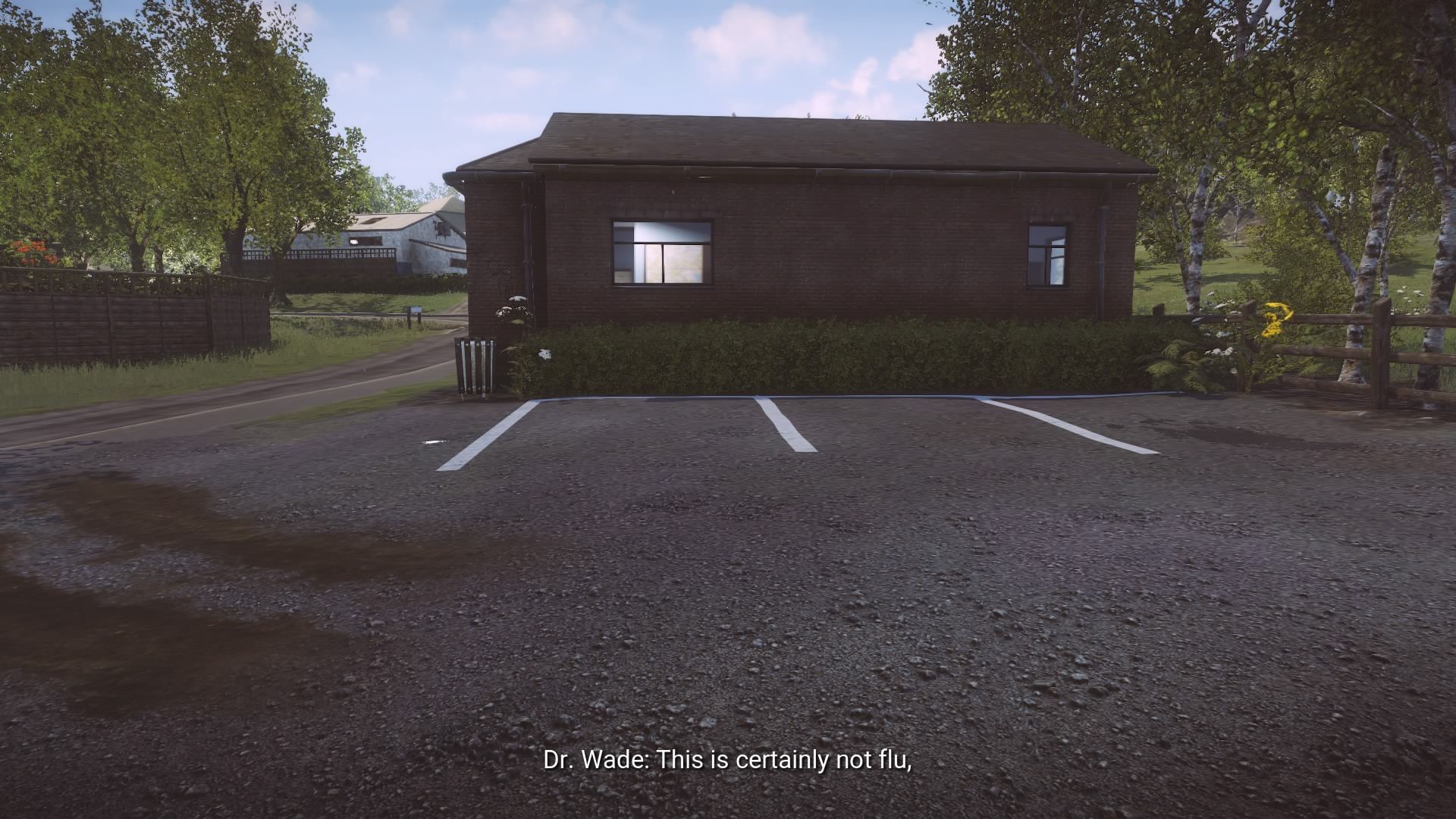
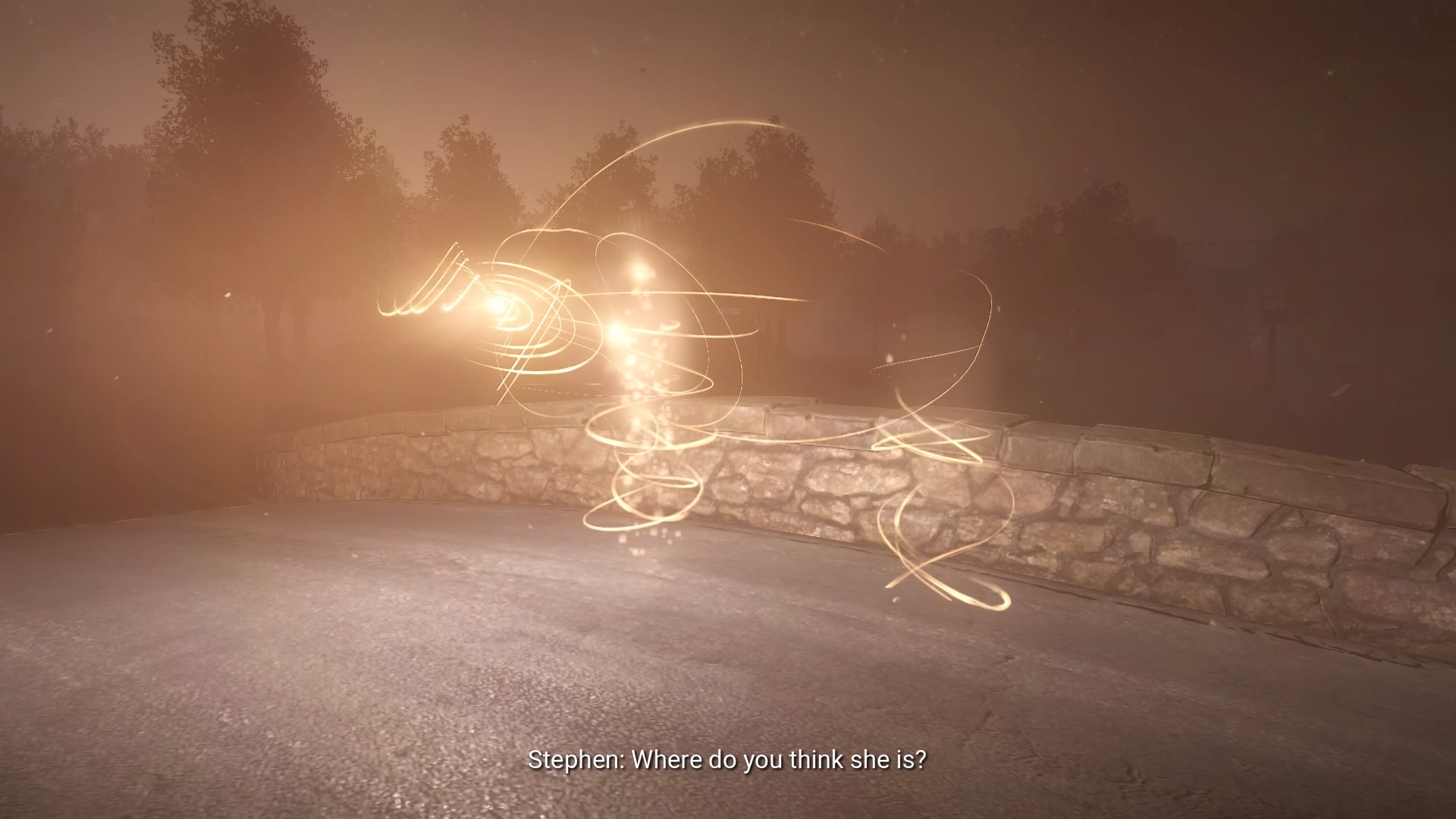
Secondly, although the conversations and recordings are integral to understanding the characters and the plot, a lot of them aren’t all that interesting. After spending forever walking up to the location of one, you hope to hear some interesting gossip or the development of a major plot point. But nope, the characters are just musing about something and nothing. And after a while, you kind of just want to get it over and done with. You end up hearing conversations, but don’t really listen to them. It’s a shame as obviously a lot of work has gone into crafting each piece of dialogue, but in a way it feels like too much has gone into it. You sort of feel overwhelmed with the amount of information you’re having to process from the many former residents of the village. After initially wanting to focus on each and every detail, your brain starts filtering out the stuff that feels like filler. Ironically, the more fascinating parts of the game are the conversations about normal life – things like such and such sleeping with so and so, or how plans for the village fayre are going. You might find yourself caring more about the relatable parts of the lives of Yaughton’s villagers, than their thoughts and feelings about the Rapture. Yep, maybe they should have left the Rapture out of Everybody’s Gone to the Rapture. Just call it Everybody’s Gone Out for the Day.
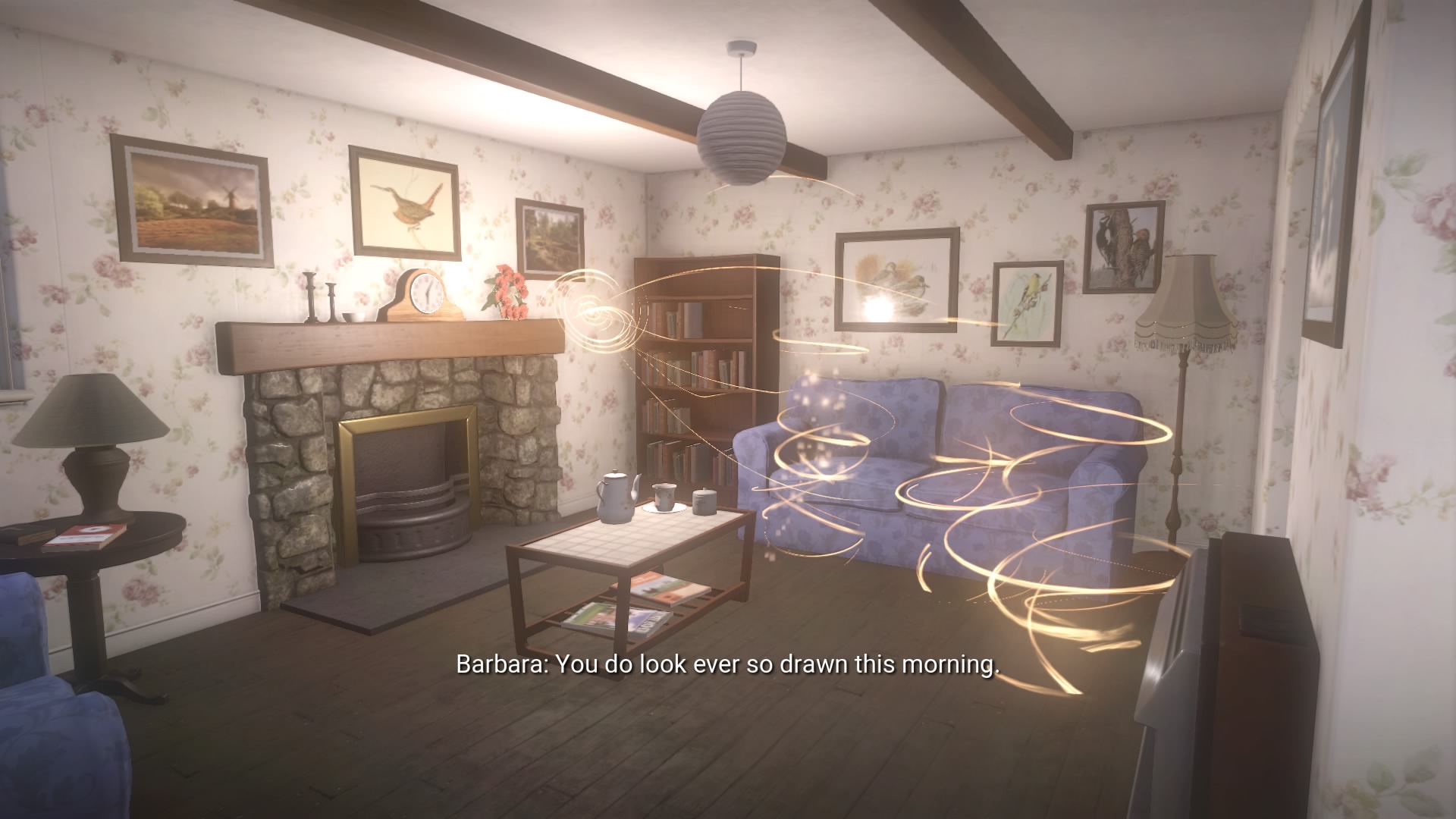
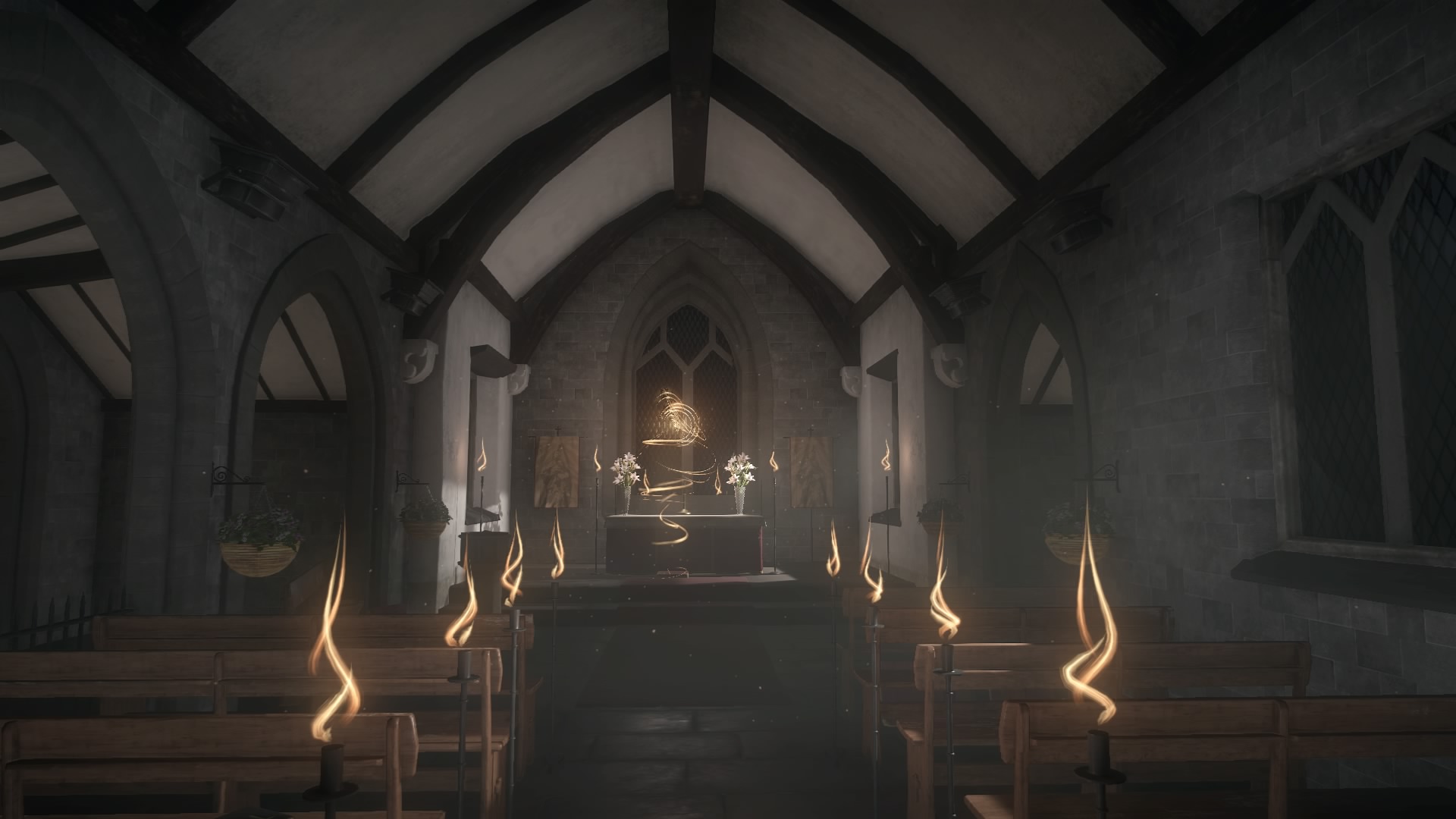
But, even though you might want to hear about the gossip more than the drama, you might not really care much about that either. The problem for me is that I didn’t really particularly like or dislike any of the characters. I didn’t feel engaged enough with them to care about them or resent them. Maybe the first chapter should have been dedicated purely to showing everyday village life without even going into much detail about the Rapture at all. Give the characters a bit of personality, show them arguing passionately amongst each other about who is going to judge the annual Yaughton Marrow Growing competition, or let us see blokes getting drunk in the pub while discussing the football. Give us a view of normal family life, with kids playing in the garden, dad faffing with the Commodore 64, and mum doing whatever mums did in the 1980s. Morning aerobics with “Mad” Lizzie Webb on TV-am, wasn’t it? Make us care so much about the characters that we really don’t want to lose them to a Rapture. Or, show one of them being a general dickhead to everyone, and let the moment when the Rapture comes to them fill us with sadistic delight. Another issue preventing the ability to empathise with the characters might actually be down to the radio play style of acting in the game. Although performances are polished and professional, the conversations don’t really sound realistic and natural as actors don’t talk like real people do in everyday conversation. This just makes it a little harder to relate to these people.
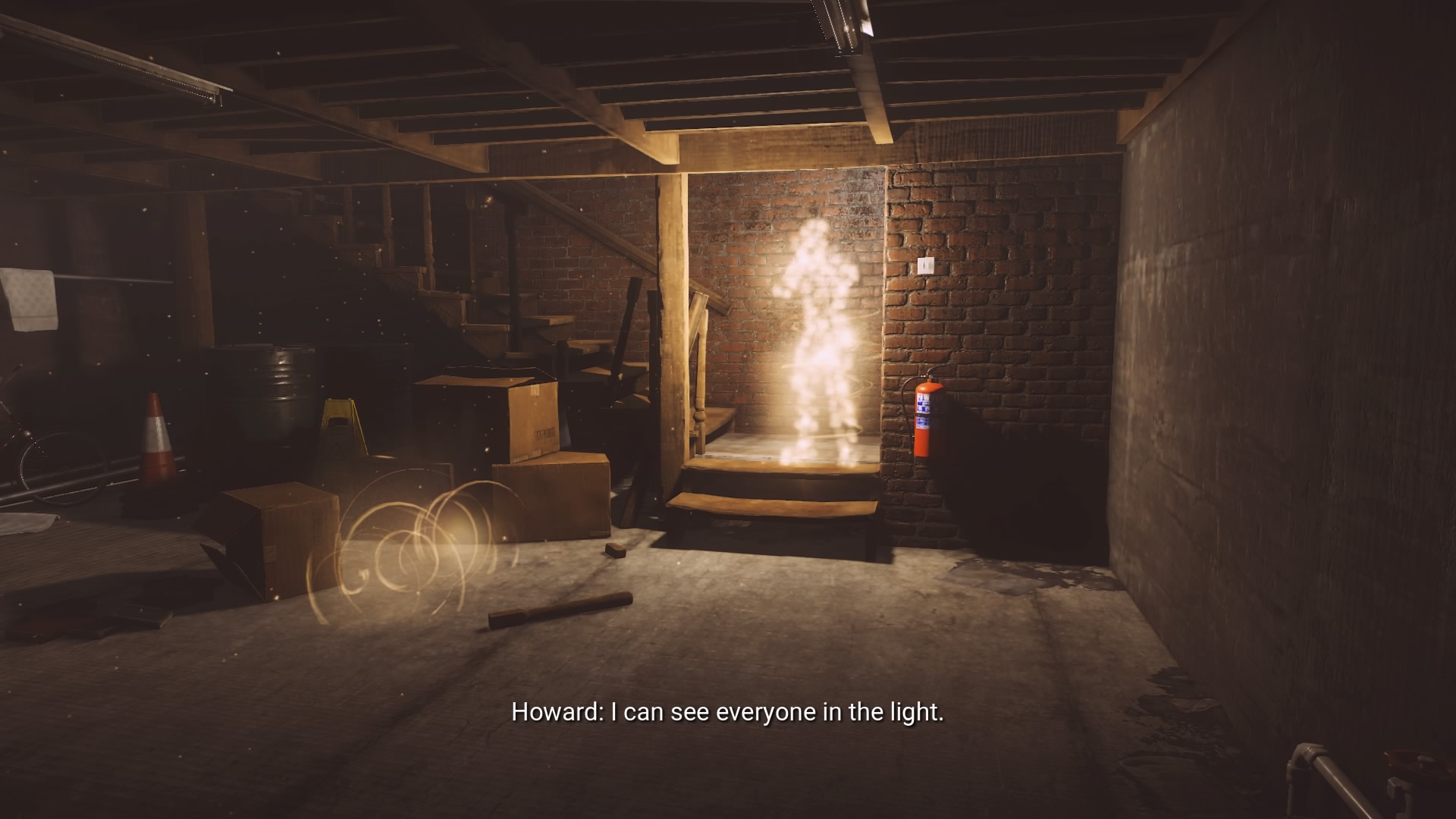
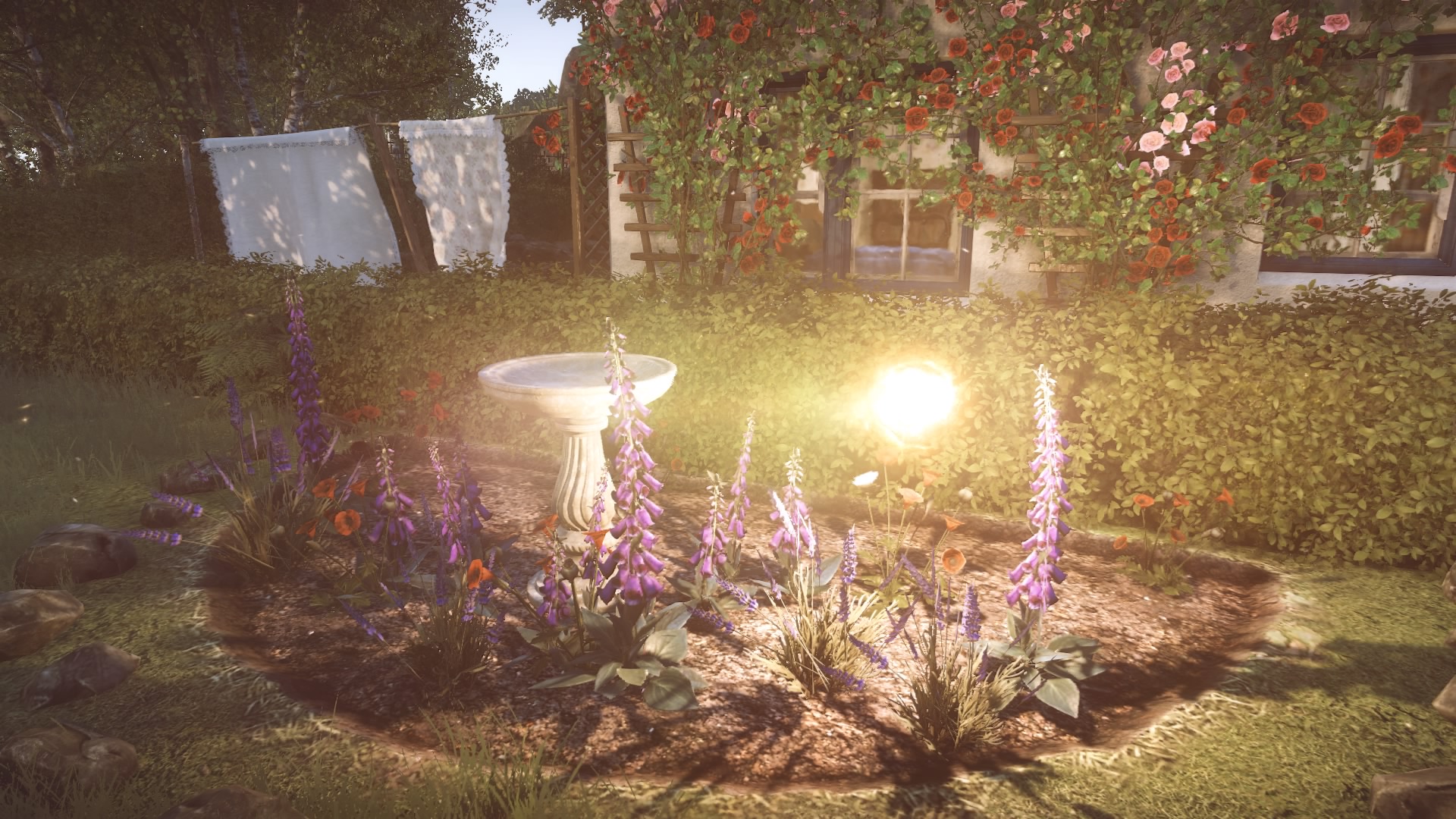
Despite my personal opinions about the lack of characterisation of the characters, the actual plot of the game generally does start off strongly. However, it does get bogged down a little in the middle, before picking up again towards the end. A lot of what happens in the game is open to your own interpretation, and it all gives you plenty of food for thought. And, although I haven’t yet played the game through a second time, there is just something about it that makes me want to go for a lone trip around Yaughton again. Probably having knowledge of the basic events of the story means that next time I decide to go for a walk around the village, I’ll focus more on the many different and deeper aspects of it, and maybe get to understand the characters a bit better. It does appear that there are a great deal of hidden messages, references, secret codes and things to decipher in the game that one playthrough might not do the game justice. You simply can’t make sense of everything without knowing the outcome first. So, you have to do it again to put all the pieces together. And possibly again and again. But there’s just something that’s stopping me from wanting to go back there immediately. Maybe it’s the fact that the first time felt a bit like a chore at times, and the thought that it’ll take forever to get around again just doesn’t fill me with anticipation. It’s a shame you can’t just hop onto one of the bicycles that have been abandoned.
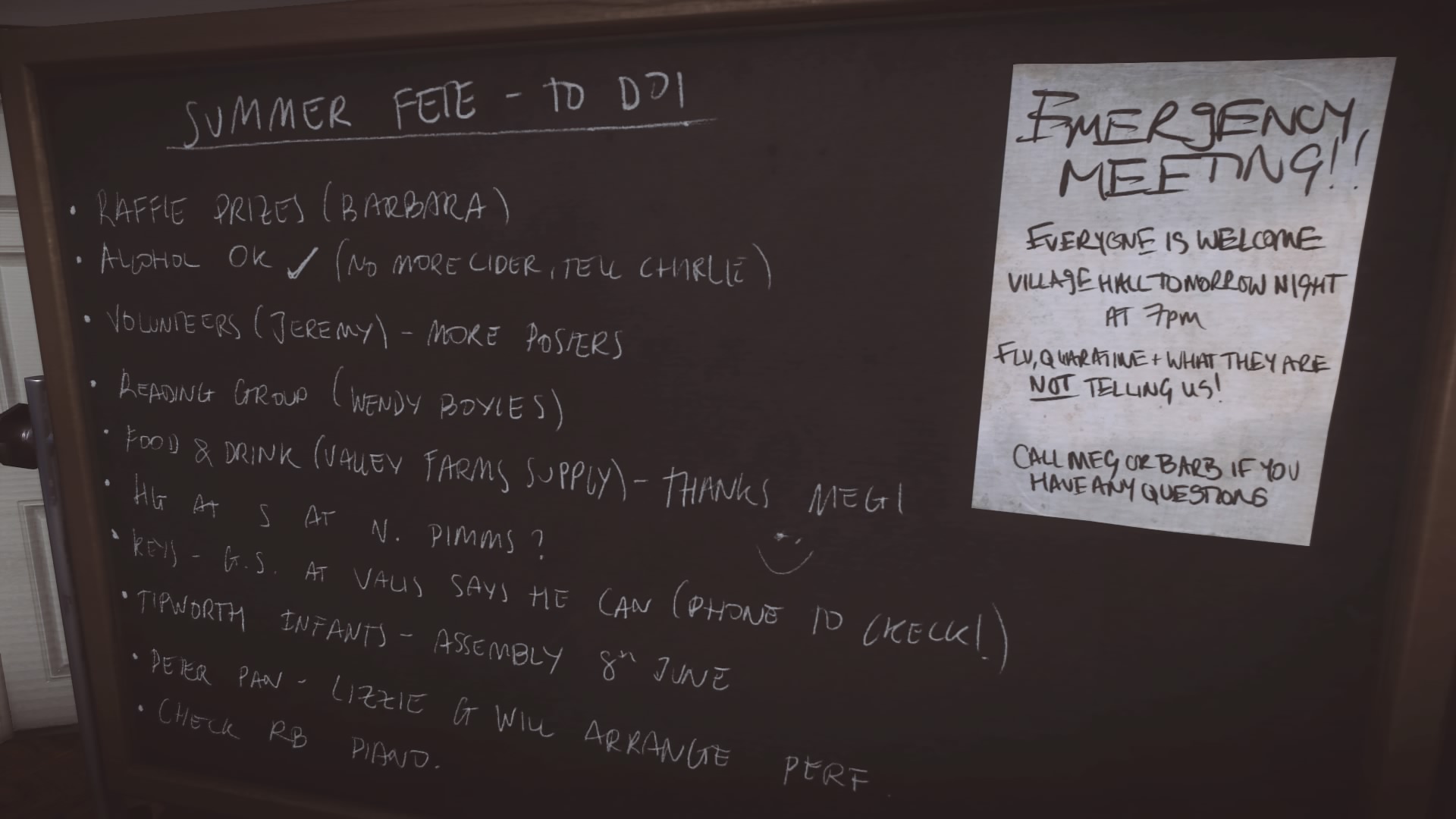

Everybody’s Gone to the Rapture is fairly typical of the genre of video game that is described, sometimes derogatively, as a “walking simulator”. It’s everything that fans of this style of game love and critics of it hate. For the fans, it’s a deep, thought-provoking, beautiful work of art. For detractors, it’s slow-paced, boring and pretentious. As a video game in the traditional sense, it is lacking in action, doesn’t require any particular gaming skills, and won’t challenge you, plus the slow pace of movement is frustrating. However, games can also be engaging and emotional experiences, whether or not they contain lots of actual gameplay elements. In this instance, whether Everybody’s Gone to the Rapture succeeds as an experience is much more subjective. It certainly goes to great lengths to provide a deep and emotional quest, with its outstanding graphical and aural presentation, but the characterisations and storylines of Yaughton’s residents may or may not endear themselves to you. It’s definitely worth a go, and as it’s short enough to get through in less than six hours, it’s certainly worth sticking with. For some, it will be a game they’ll remember for years to come, and one they’ll want to revisit again and again. For others, it’ll be a few hours of a walkabout around an empty village with some vaguely interesting things happening during it, but forgotten about and abandoned afterwards.
